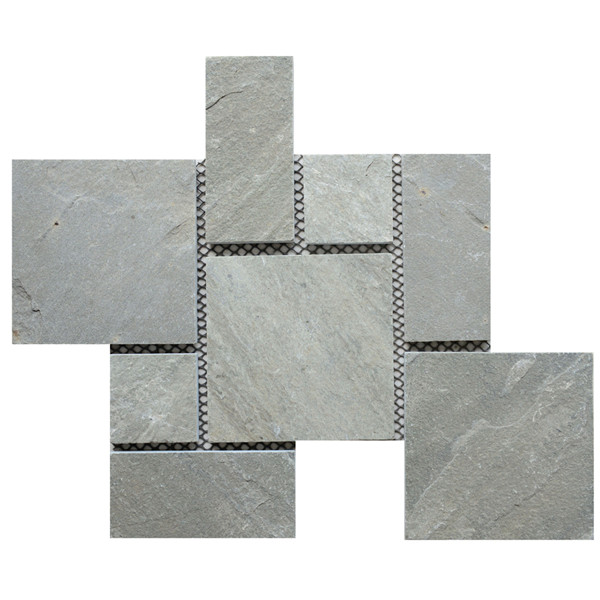Introduction
Flagstone has long been a popular choice for landscaping and construction projects due to its natural beauty and durability. However, traditional flagstone can be expensive and difficult to work with. This has led to the rise of cultured flagstone, a cost-effective and versatile alternative that mimics the look of natural flagstone while offering added benefits. In this article, we will explore the world of cultured flagstone, from its origins and manufacturing process to its applications and advantages.
Origins of Cultured Flagstone
Cultured flagstone, also known as manufactured or artificial flagstone, is a man-made product designed to replicate the appearance of natural flagstone. Natural flagstone is a type of sedimentary rock that is split into flat, irregular pieces and used for a variety of outdoor and indoor applications, such as patios, pathways, and walls. While natural flagstone is prized for its unique beauty and rustic charm, it can be expensive and difficult to source in large quantities.
Cultured flagstone was developed as a more affordable and accessible alternative to natural flagstone. By using a combination of concrete, aggregates, and pigments, manufacturers are able to create flagstone-like products that closely resemble the appearance of natural stone. Cultured flagstone is available in a wide range of colors, shapes, and sizes, making it a versatile choice for a variety of design projects.
Manufacturing Process
The manufacturing process of cultured flagstone involves several key steps to ensure the final product meets quality standards and replicates the look of natural flagstone. The following are the typical steps involved in the production of cultured flagstone:
1. Formulation: The first step in the manufacturing process is to create a formulation that includes the right mix of concrete, aggregates, pigments, and other additives. This formulation will determine the color, texture, and strength of the finished product.
2. Mixing: Once the formulation is established, the ingredients are mixed together in a concrete mixer to create a uniform blend. The mixing process is crucial to ensure that the aggregates are evenly distributed throughout the concrete mix.
3. Molding: The mixed concrete is then poured into molds that are designed to replicate the shape and texture of natural flagstone. The molds can be made from a variety of materials, such as rubber or plastic, and come in different sizes and patterns.
4. Curing: After the concrete is poured into the molds, it is left to cure for a specific period of time to allow it to harden and gain strength. The curing process can take several days, depending on the type of concrete mix and environmental conditions.
5. Finishing: Once the concrete has cured, the cultured flagstone pieces are removed from the molds and inspected for quality. Any rough edges or imperfections are smoothed out, and the pieces may be treated with a sealant to enhance their durability and appearance.
Applications of Cultured Flagstone

Cultured flagstone can be used in a wide range of indoor and outdoor applications, thanks to its versatility and durability. Some common uses of cultured flagstone include:
1. ledge stone for sale : Cultured flagstone is a popular choice for creating beautiful and functional outdoor patios. Its natural appearance adds a touch of elegance to any outdoor space, while its durability makes it ideal for withstanding the elements.
2. Walkways: Cultured flagstone can be used to create stunning walkways and pathways in gardens, parks, and other outdoor areas. Its irregular shapes and sizes add visual interest and texture to the landscape.
3. Retaining Walls: Cultured flagstone is often used to build retaining walls that help prevent soil erosion and create level terraces in sloped areas. Its strength and durability make it a practical choice for retaining wall construction.
4. Fire Pits: Cultured flagstone can be used to build stylish and functional fire pits in outdoor living spaces. Its heat-resistant properties make it a safe and durable material for fire pit construction.
5. Indoor Flooring: Cultured flagstone can also be used indoors to create unique and eye-catching flooring designs. Its natural appearance adds warmth and character to any room, making it a popular choice for kitchens, bathrooms, and entryways.
Advantages of Cultured Flagstone
Cultured flagstone offers several advantages over natural flagstone and other traditional building materials. Some of the key benefits of cultured flagstone include:
1. Cost-Effective: Cultured flagstone is typically more affordable than natural flagstone, making it a cost-effective choice for large-scale projects or budget-conscious homeowners.
2. Easy to Install: Cultured flagstone is lighter and easier to work with than natural stone, making it quicker and more convenient to install. Its uniform shapes and sizes also help streamline the installation process.
3. Versatile: Cultured flagstone is available in a wide range of colors, shapes, and sizes, allowing for endless design possibilities. Whether you prefer a traditional, rustic look or a modern, sleek design, cultured flagstone can be customized to suit your aesthetic preferences.
4. Low Maintenance: Cultured flagstone requires minimal maintenance compared to natural stone, as it is less prone to staining, chipping, or cracking. Regular cleaning and occasional sealing are usually all that is needed to keep cultured flagstone looking its best.
5. Sustainable: Cultured flagstone is an environmentally friendly building material, as it is made from recycled materials and requires less energy to produce than natural stone. By choosing cultured flagstone, you can reduce your carbon footprint and contribute to a more sustainable future.
Conclusion
Cultured flagstone is a versatile and cost-effective alternative to natural flagstone that offers numerous benefits for homeowners, contractors, and designers alike. With its realistic appearance, durability, and ease of installation, cultured flagstone is a popular choice for a wide range of indoor and outdoor applications. Whether you are looking to create a stunning patio, walkway, or retaining wall, cultured flagstone is sure to enhance the beauty and functionality of your space. Consider incorporating cultured flagstone into your next design project and experience the timeless elegance and charm of this innovative building material.
